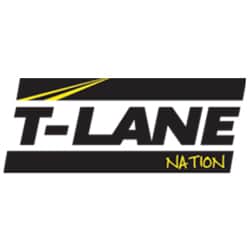Do you like the flexibility of offering your employees online training courses?
AND Do you find it challenging to schedule resources to ensure mandated certifications for employees are verified?
Do you find it challenging to confirm that the actual employee is really completing their training?
Here is how we can help
Industry has seen an increased demand and need for online training. Over the years, more employees are working non-standard hours and many companies are hiring more contract workers. With this change, work-based learning has become more flexible to accommodate the shift in a company’s training needs. While the flexibility and convenience of online courses has helped to make onboarding and training more efficient and cost-effective, there may be a compromise on maintaining the integrity of course completion. When workers complete training away from the supervision of a classroom, how do you guarantee the person taking the training is really who they say they are? Is there a way to meet these changing industry needs while still ensuring the integrity of course completions?
The simple solution is called Virtual Proctoring
Virtual proctoring is the use of web-based technology to supervise an exam or the delivery of educational material, including online courses, exams, and even form completions. By using facial detection algorithms and recognition technology, the software allows one to verify the identity of the learner and ensure learners are following the session rules. This means that it not only verifies one’s identity, but also whether or not learners are paying attention. This is done by using the capabilities already built into web browsers and webcams, so no additional software is required by the employee.
Save Time and Money
Converting your training sessions and orientations to online training programs allows workers to complete training before they arrive on the job site. This not only minimizes the loss of productive time, but also ensures there are no logistical delays involved with preparing and organizing content, booking training facilities or grading exams. With virtual proctoring, you can also minimize the costs of trainers and exam supervision while ensuring consistent identity verification.
A Client Case Study: Estimated Cost Savings
Below is our client’s cost savings and sample budget comparison when they introduced virtual proctoring into the company. Our client saved millions of dollars by moving their employee’s orientation online and integrating our virtual proctoring tool.
To help illustrate the cost savings, the following is a sample budget comparison, modeled after and scaled accurately to the numbers given to us by our client.
Estimated Costs for Instructor-Led Orientation
Approximate Total Cost: $5,000,00
Productivity Loss: 63%
Trainer Costs: 6.4%
Facility Costs: 30.3%
Cost Savings with Virtual Proctoring
Estimated Cost Savings with Virtual Proctoring: $4,715,000
Estimated cost savings based on a development and implementation cost of $285,000 versus the projected $5,000,000 for the onsite orientation
- Ethics Enforcement
- Protection and Due Diligence
- What are the Experts saying?
As the student’s webcam records the training session, the technology monitors for any deceptive behavior displayed during the online course session. Deceptive behavior can then be flagged. Examples of such behavior include the student placing images in front of the webcam or switching participants after showing their ID. In monitoring and flagging these types of behavior, virtual proctoring can help identify and prevent unethical actions before it occurs on site. As the statistics below show, 6.4% of participants were flagged during virtual proctoring sessions due to not following the outlined session rules and/or deceptive behavior.
Session Data Summary*
Verified Sessions (No Issues): 82.8%
Administrative Flags** (majority cleared): 0.8%
Participation Flags***: 5.8%
Deceptive Flags: 0.6%
*Taken from a sample size of just over 15,000 participants across 5 courses (2016)
**ID or participant image could not be verified
***Participant failed to follow the rules of the session
Legal Protection
When proctored sessions are mandatory for online training sessions, you can prove compliance with regulatory requirements. Usernames and password are insufficient to confirm identity or an individual’s training participation. With virtual proctoring, if a work incident occurs despite the allocated training, the company has recorded proof the employee had completed the required training, which provides a defense against potential litigation.
Due Diligence
The importance of safety compliance is nothing new to health and safety professionals. We know we must do everything reasonably possible to prevent workplace incidents. Having policies in place and offering training is not necessarily enough. Meta-analytical investigations have shown that engagement levels in safety training is directly related to safety performance within organizations. When virtual proctoring is used, this ensures workers are engaged with online training.
An online course that does not identify the participant does not meet the minimum standard.”
OHS in Alberta (Ask the Expert)
“Identity verification and proctoring technology is particularly critical when organizations use web-enabled educational materials as part of risk control strategies that seek to ensure that employees are competent in regulatory critical activities (e.g., standards of business conduct, financial accounting requirements, reporting requirements, disclosure, health and safety or environmental requirements).”
IOSH ALBERTA Industry Best Practice
“Employers must be able to show both that the training was adequate, based on training content, and that the employee received the training.”
OSHA Publication 2254-09R 2015
“Court cases such as R. v. Rose’s Well Services Ltd. illustrate that employers need to ensure that they do more than provide training access. These cases show that there is a need to ensure that the personnel requiring the training are the ones receiving it.”
Robert Day, Licensed Investigator and Paralegal
“When training is delivered online an employer needs to confirm that the individual taking the training is the intended recipient, and that the employee did not just click play and walk away, or have others complete the training or answer comprehension testing questions for them.”
Jason Kraft, Occupational Health and Safety Administration (Officer)




















